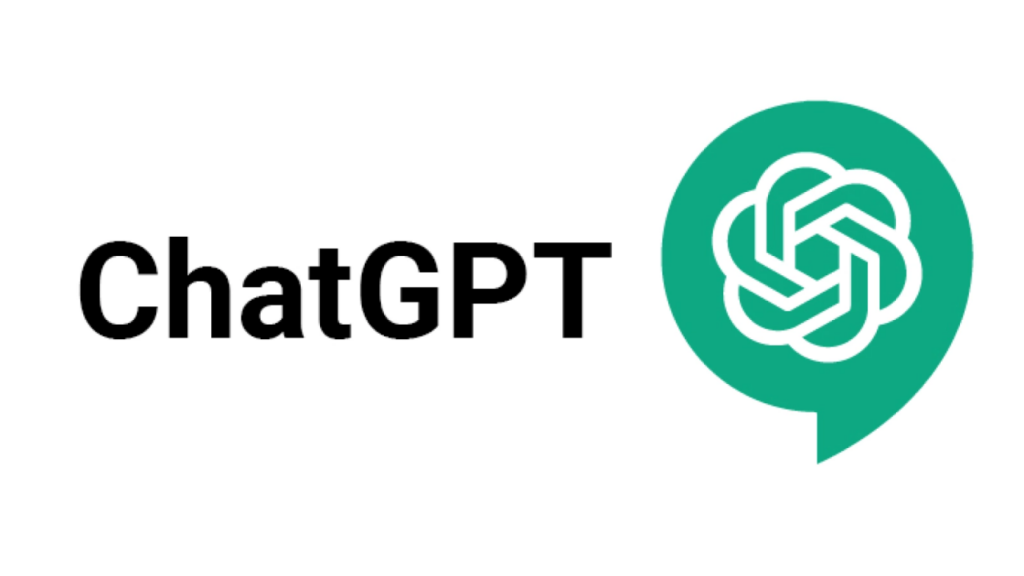Ethical hacking is the authorized and legitimate practice of probing computer systems, networks, or applications to identify security vulnerabilities that malicious hackers could exploit. It involves using the same tools, techniques, and processes that cybercriminals employ, but with permission from the system’s owner and with the goal of improving overall security. Ethical hacking is an essential component of modern cybersecurity, providing organizations with insight into weaknesses before they can be exploited by real attackers.
In today’s digital world, where data breaches and cyberattacks occur daily, ethical hackers play a crucial role in protecting personal information, corporate assets, and even national security. They act as the “digital guardians” who ensure that technology systems remain safe, reliable, and trustworthy. Understanding ethical hacking requires exploring its origins, methodologies, legal frameworks, tools, and the professional standards that define the practice.
The Origins and Evolution of Ethical Hacking
The concept of ethical hacking emerged alongside the rise of computer networking and the internet. In the early decades of computing, security was not a primary concern; systems were isolated and accessed only by trusted individuals. As networks expanded and computers became interconnected, vulnerabilities began to appear, and with them came the rise of malicious hacking.
In the 1960s and 1970s, the term “hacker” originally referred to individuals with advanced programming skills who loved exploring computer systems and creating innovative solutions. This curiosity-driven hacking was not inherently malicious—it was an intellectual pursuit. However, as computing became commercialized and connected to financial and governmental systems, a new form of hacking emerged: unauthorized intrusions for personal gain or sabotage.
By the 1980s and 1990s, high-profile security breaches led to growing awareness of the need for defensive measures. Companies and governments realized that the best way to protect systems from hackers was to employ skilled professionals who could think like them—but operate legally and ethically. This gave birth to the concept of ethical hacking, sometimes called “white-hat hacking.”
The term “ethical hacker” gained widespread recognition after the publication of “The Cuckoo’s Egg” by Clifford Stoll in 1989 and later through the work of organizations such as the International Council of E-Commerce Consultants (EC-Council), which introduced the Certified Ethical Hacker (CEH) program in the early 2000s. Since then, ethical hacking has evolved into a professional discipline essential for cybersecurity risk management.
The Ethical Foundation of Hacking
The distinguishing feature between ethical hacking and malicious hacking lies in consent and intent. Ethical hackers operate with explicit authorization from the organization or individual who owns the system. Their purpose is to identify vulnerabilities so that they can be fixed, not exploited. This legal and moral distinction ensures that their work contributes positively to cybersecurity.
Ethical hacking follows a code of conduct emphasizing integrity, confidentiality, and professionalism. Ethical hackers are expected to respect privacy, report findings responsibly, and avoid causing any damage to systems or data. In many organizations, strict non-disclosure agreements (NDAs) govern the engagement, ensuring that sensitive information discovered during testing remains protected.
This ethical boundary is critical. Without it, penetration testing—the process of simulating cyberattacks—could easily cross into illegal territory. Therefore, one of the central principles of ethical hacking is “authorization.” No test is conducted without explicit written permission from the system’s owner.
The Objectives of Ethical Hacking
The primary goal of ethical hacking is to strengthen the security posture of an organization. By identifying and addressing weaknesses before malicious actors can exploit them, ethical hackers help prevent data breaches, financial losses, and reputational damage.
However, ethical hacking goes beyond just finding flaws. It also helps organizations:
- Understand the effectiveness of existing security measures.
- Evaluate the awareness and readiness of employees against social engineering attacks.
- Test the response of security systems such as intrusion detection and prevention mechanisms.
- Ensure compliance with cybersecurity standards and legal regulations.
Through these objectives, ethical hacking transforms security from a reactive process into a proactive defense strategy.
The Phases of Ethical Hacking
Although ethical hacking engagements vary depending on the target and scope, they generally follow a systematic approach designed to mimic the attack lifecycle of real-world hackers. This structured methodology ensures thoroughness, repeatability, and ethical compliance throughout the process.
Reconnaissance
The first phase involves gathering as much information as possible about the target. This can include domain names, IP addresses, network architecture, employee details, and public records. Ethical hackers use tools like Nmap, WHOIS, and Google dorking to collect both passive and active intelligence. The goal is to map the target environment without triggering alarms.
Scanning and Enumeration
Once basic information is collected, the hacker performs network scans to identify live hosts, open ports, and running services. Enumeration involves extracting detailed data about the system, such as user accounts, software versions, and potential entry points. Tools such as Nessus, Nikto, and OpenVAS are commonly used to identify vulnerabilities in this phase.
Gaining Access
After identifying weak points, ethical hackers attempt to exploit them to gain access, using methods similar to real attackers—such as password cracking, exploiting software bugs, or leveraging misconfigurations. This step tests whether the vulnerabilities discovered are truly exploitable and how deep the compromise can go.
Maintaining Access
Once inside, ethical hackers simulate what a real attacker would do to maintain persistence. This can involve creating backdoors or privilege escalation. However, ethical hackers document every action and ensure no permanent damage or unauthorized access remains after testing.
Covering Tracks and Reporting
Unlike malicious hackers, ethical hackers do not erase logs to hide their presence. Instead, they demonstrate how a real attacker might cover their tracks, helping organizations strengthen their monitoring systems. The engagement concludes with a comprehensive report detailing all vulnerabilities, how they were discovered, their potential impact, and recommendations for remediation.
Types of Ethical Hacking
Ethical hacking is not a one-size-fits-all process. It encompasses various types of security testing, each targeting different components of an organization’s infrastructure.
Network Hacking
Network hacking focuses on identifying weaknesses in routers, switches, firewalls, and wireless networks. The goal is to prevent unauthorized access and data interception.
Web Application Hacking
This type tests websites and web-based services for vulnerabilities like SQL injection, cross-site scripting (XSS), and insecure authentication mechanisms. With most organizations relying heavily on web platforms, web app hacking is among the most common ethical hacking engagements.
System Hacking
System hacking targets desktop and server operating systems to find misconfigurations or unpatched software that can be exploited.
Social Engineering
Humans are often the weakest link in cybersecurity. Ethical hackers use social engineering techniques, such as phishing simulations, to test how employees respond to deceptive tactics.
Wireless Network Hacking
This focuses on Wi-Fi security. Ethical hackers test for weak encryption, rogue access points, and unauthorized connections that could allow intruders into the network.
Cloud and IoT Hacking
With the rise of cloud computing and smart devices, ethical hackers now test virtualized environments and Internet of Things systems, ensuring data and devices are protected from remote threats.
Tools and Techniques in Ethical Hacking
Ethical hackers use a wide variety of tools to simulate real attacks. Some are open-source, while others are commercial solutions designed for penetration testing.
Popular tools include Metasploit for exploiting vulnerabilities, Burp Suite for web application testing, Wireshark for network packet analysis, and John the Ripper for password cracking. Kali Linux, a specialized operating system, bundles many of these tools into a single platform used by security professionals worldwide.
Techniques such as brute-force attacks, SQL injection, phishing, privilege escalation, and malware analysis are employed to understand how actual threats work. The difference lies in the intent—ethical hackers perform these actions in controlled, legal environments.
The Legal and Regulatory Framework
Ethical hacking exists within strict legal boundaries. Unauthorized access to systems or data remains illegal, even if the intent is harmless. Therefore, all ethical hacking activities must be backed by written consent and defined scope agreements.
In many countries, laws such as the Computer Fraud and Abuse Act (CFAA) in the United States, the General Data Protection Regulation (GDPR) in Europe, and similar cybersecurity regulations globally establish rules for data protection and system integrity. Ethical hackers must understand and comply with these legal standards.
Organizations typically draft a “rules of engagement” document specifying what systems can be tested, what methods are allowed, and what types of data should not be touched. This ensures that testing remains ethical, safe, and within the law.
The Role of Ethical Hackers in Cybersecurity
Ethical hackers serve as the first line of defense in the cybersecurity ecosystem. By identifying vulnerabilities early, they prevent attackers from gaining a foothold. They also help organizations comply with security standards such as ISO 27001, PCI-DSS, and HIPAA, which often require regular penetration testing.
Beyond identifying weaknesses, ethical hackers play a strategic role in cybersecurity planning. They help design secure architectures, advise on security policies, and assist in incident response. Their insights often bridge the gap between technical systems and management decisions.
As cyber threats evolve, ethical hackers must constantly update their skills to understand new technologies, attack vectors, and defense mechanisms. The rapid growth of artificial intelligence, 5G networks, and quantum computing is creating new challenges and opportunities for ethical hacking.
Education, Skills, and Certifications
Becoming an ethical hacker requires a combination of technical expertise, analytical thinking, and integrity. Foundational knowledge in computer networks, programming, operating systems, and cybersecurity principles is essential.
Professional certifications validate an ethical hacker’s skills and commitment to ethical standards. The Certified Ethical Hacker (CEH) credential, offered by EC-Council, is one of the most recognized in the field. Other respected certifications include Offensive Security Certified Professional (OSCP), CompTIA PenTest+, and GIAC Penetration Tester (GPEN).
In addition to certifications, practical experience is vital. Many ethical hackers gain hands-on skills through capture-the-flag (CTF) competitions, bug bounty programs, and cybersecurity labs. These environments simulate real-world attack and defense scenarios, allowing professionals to test and improve their abilities safely.
Ethical Hacking and Bug Bounty Programs
Bug bounty programs have become a major avenue for ethical hackers to contribute to cybersecurity. Companies like Google, Facebook, and Microsoft invite ethical hackers worldwide to find and responsibly disclose vulnerabilities in their products. In return, they offer monetary rewards or recognition.
These programs create a mutually beneficial relationship between companies and hackers. Organizations gain improved security without malicious exploitation, while ethical hackers receive incentives and professional credibility. Platforms such as HackerOne and Bugcrowd have made this practice mainstream, connecting thousands of ethical hackers with global businesses.
The Future of Ethical Hacking
The future of ethical hacking is tightly bound to technological advancement. As artificial intelligence, machine learning, and automation integrate deeper into digital infrastructure, ethical hackers will increasingly rely on these technologies to detect complex threats and simulate attacks at scale.
Quantum computing poses both opportunities and risks. While it promises stronger encryption methods, it could also render current cryptographic systems obsolete. Ethical hackers will play a central role in testing and adapting security protocols to meet these new challenges.
Additionally, as digital transformation accelerates across industries—from healthcare to finance to government—the demand for ethical hackers will continue to rise. Cybersecurity is no longer optional; it is fundamental to trust, stability, and economic success in the digital age.
The Ethical Dilemma and Responsibility
While ethical hacking serves a noble purpose, it also raises important moral and philosophical questions. Who decides what is ethical? What happens when vulnerabilities discovered by ethical hackers cannot be disclosed due to national security concerns?
Responsible disclosure remains one of the most debated topics in cybersecurity. Ethical hackers must balance transparency with caution, ensuring that vulnerabilities are reported to the right authorities and not publicly revealed before they are fixed. Mishandling this process can cause harm even when the intent is good.
Therefore, ethics in hacking is not just about legality—it is about judgment, responsibility, and accountability. The best ethical hackers are those who combine technical mastery with moral integrity.
Conclusion
Ethical hacking represents the convergence of curiosity, skill, and responsibility. It transforms the mindset of the hacker—from a potential threat into a powerful defender of digital systems. In a world where data is more valuable than gold and cyber threats grow more sophisticated by the day, ethical hackers serve as indispensable allies in securing the digital frontier.
By thinking like attackers, yet acting as defenders, ethical hackers expose weaknesses before they can be exploited. They protect the foundations of modern civilization—communication, commerce, healthcare, and national security—from invisible threats lurking in cyberspace.
Ethical hacking is more than a profession; it is a philosophy of proactive defense and moral responsibility in the digital age. It embodies the belief that knowledge and power must be used for good, and that the same tools capable of harm can, in the right hands, become instruments of protection. The future of cybersecurity—and indeed, the safety of our digital world—depends on the principles and practice of ethical hacking.






